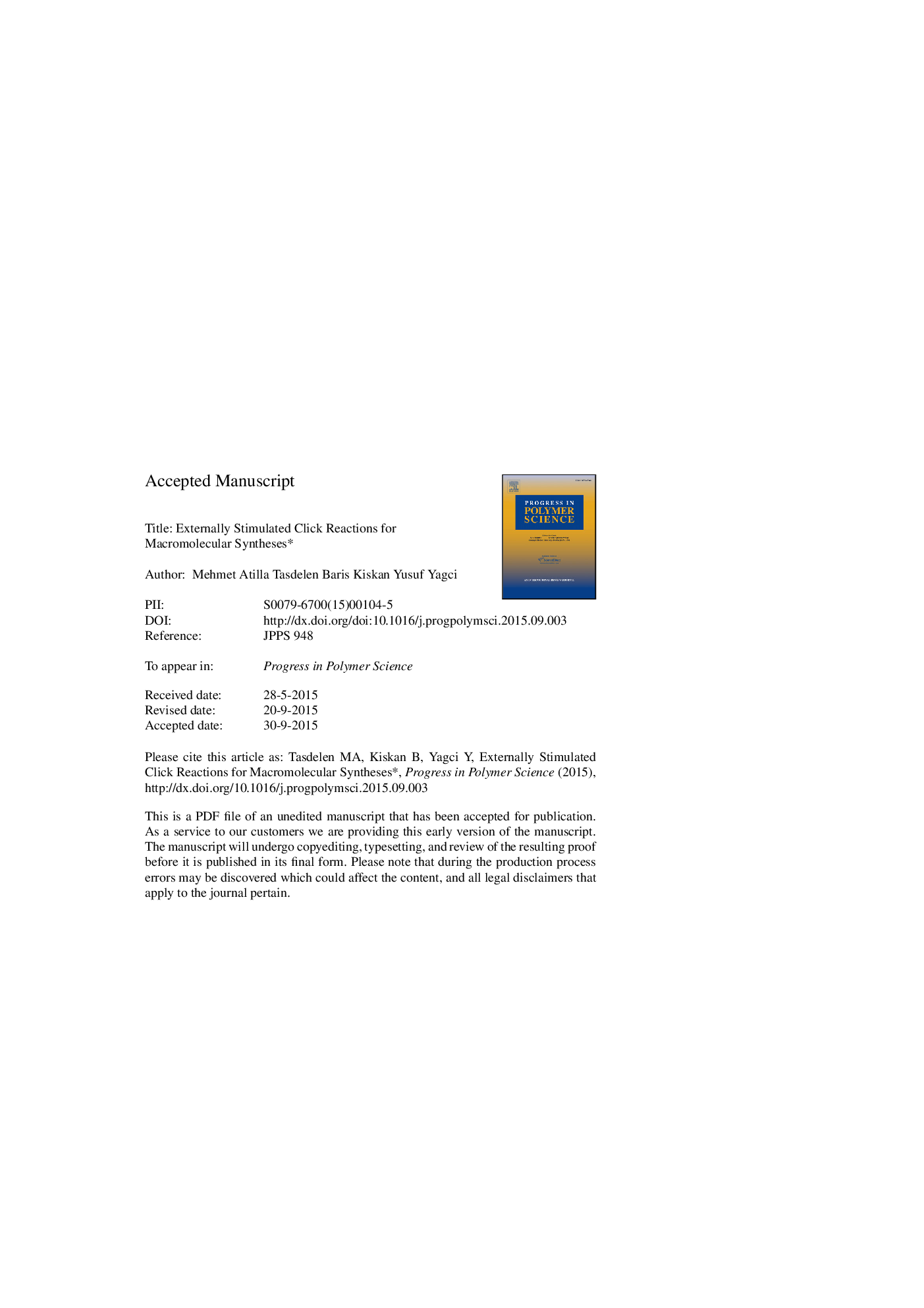| Article ID | Journal | Published Year | Pages | File Type |
|---|---|---|---|---|
| 5208002 | Progress in Polymer Science | 2016 | 208 Pages |
Abstract
Over the last decade, click chemistry reactions, that are fast, simple to use, easy to purify, versatile, regiospecific, and give high product yields have gained significant importance for synthetic chemistry. The design of these synthetic tools that can be controlled by external stimuli such as microwave, ultrasound, light or electric pulses is a research area with strong interest for modern chemistry. In this contribution, the potential of externally stimulated click reactions in the preparation of various macromolecular structures are discussed along with the selected examples. Considering classical click reactions, external stimulation provides a number of advantages and goals, such as programmable synthesis and precise control over complex and multicomponent systems. Furthermore, these click reactions bring some improvements or overcome existing problems of present click reactions, such as toxicity, irreversible oxidation of catalyst and lack of spatiotemporal control over the reaction initiation. Due to these features, externally stimulated click reactions have various applications in a wide variety of research areas, including materials sciences, polymer chemistry, and pharmaceutical science. The next generation click reactions enable chemists to finally harness available chemical diversity for the sequence-programmable synthesis and modification of macromolecular materials.
Related Topics
Physical Sciences and Engineering
Chemistry
Organic Chemistry
Authors
Mehmet Atilla Tasdelen, Baris Kiskan, Yusuf Yagci,
